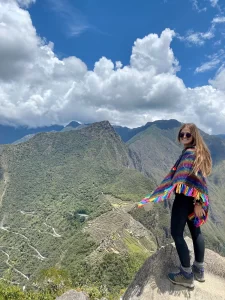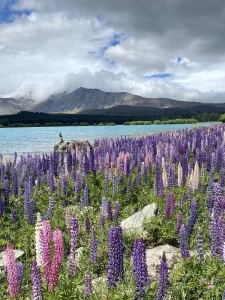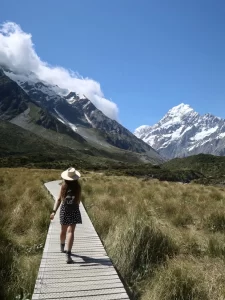Are you planning a trip to the incredible city of Cusco but only have 48 hours to explore? Don’t worry, I’ve got you covered! Cusco is known for its rich history and culture, and there’s no shortage of things to do and see while you’re there. Here’s a curated itinerary that makes the most of your short 2 days in Cusco. Let’s dive in!
Disclosure: Some of the links below are affiliate links. When you purchase through links on my site, I may make a small commission (at no extra cost to you!).
2 days in Cusco overview
Day 1:
- Cusco city tour (optional)
- Plaza de Armas: Cusco Cathedral and Church of the Society of Jesus
- Basilica Menor de la Merced
- Arco de Santa Clara
- Mercado Central de San Pedro
Day 2:
- Saqsaywaman
- San Cristobal
- Explore San Blas District
- Twelve Angled Stone
- Qorikancha
- Handicraft Center Cusco
2 days in Cusco map
How to use this map: Click “View larger map” in the top right corner. From there, you can view each location and save your favorites to your own Google Maps lists!
About Cusco
Established in the 15th century, Cusco served as the capital of the Inca Empire, one of the most significant pre-Columbian societies in South America.
During the Inca Empire, Cusco was a vibrant and thriving city that showcased the ingenuity, creativity, and spirituality of the Inca people. The Inca people built impressive structures and monuments, such as Saqsaywaman Fortress and the Temple of the Sun, which are still standing today!
In 1533, Spanish conquistadors invaded Cusco, marking the end of the Inca Empire. Under Spanish rule, Cusco underwent significant changes. Many Inca buildings were destroyed, and Spanish-style colonial buildings and churches (like the Cathedral of Santo Domingo) were built in their place.
Today, Cusco is a UNESCO World Heritage Site and a super popular destination for travelers on their way to Machu Picchu. The city’s vibrant mix of Incan and colonial architecture, along with its stunning natural landscapes and unique culture, make it a must-see destination for anyone visiting Peru.
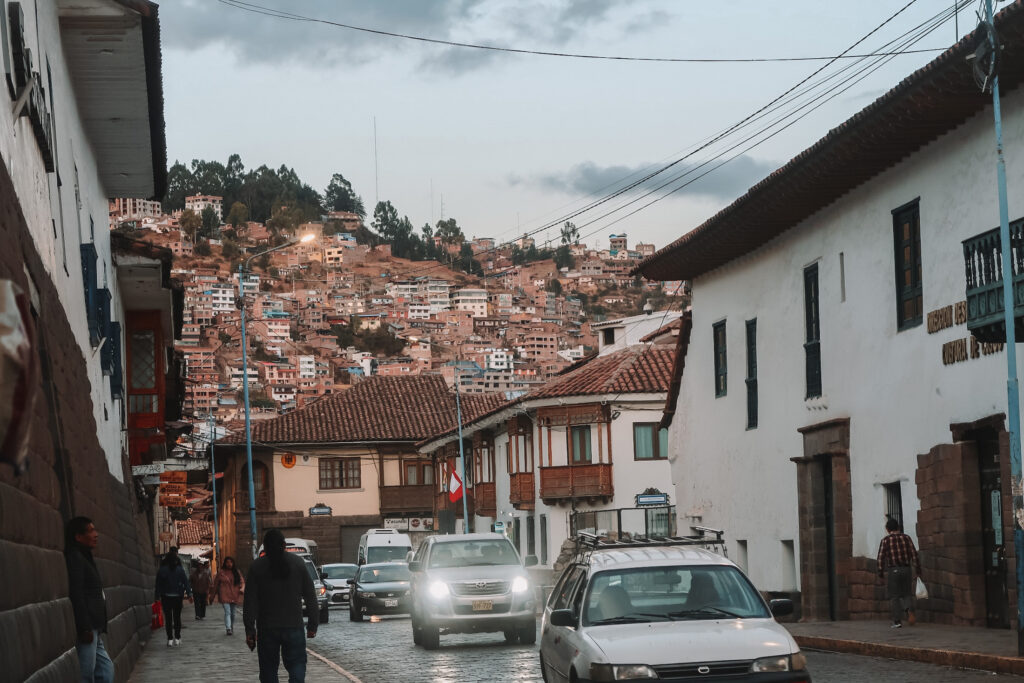
2 days in Cusco itinerary
Cusco itinerary day 1
Cusco city tour
Taking a guided tour of Cusco’s city centre is a great way to find your bearings and get acquainted with the city on your first day.
On these tours, your tour guide will take you to a handful of different historical buildings and archaeological sites around the city. You’ll learn about the history of the Inca Empire, the Spanish conquest of Cusco, and the importance of the sites you’re visiting.
It’s always really nice to get additional context from an experienced, local guide when you visit a new destination. If you’re traveling solo, group tours are also a great place to meet other like-minded travelers and have all the logistics taken care for you.
I’ve listed a few great Cusco day tour options below. I love booking through GetYourGuide because they have the most flexible cancellation policy of any other tour company!
Plaza de Armas
The Plaza de Armas, or main square, is an absolute must-visit during your 2 days in Cusco! Located in the city center, the square is surrounded by beautiful colonial buildings, including the Catedral del Cuzco and the Iglesia de la Companía de Jesús.
In the center of the plaza stands a beautiful fountain, which was built in the 17th century. You’ll probably get approached by a few art school students selling paintings or women selling handmade crafts and jewelry. (The main square is the perfect place to stock up on unique souvenirs!)
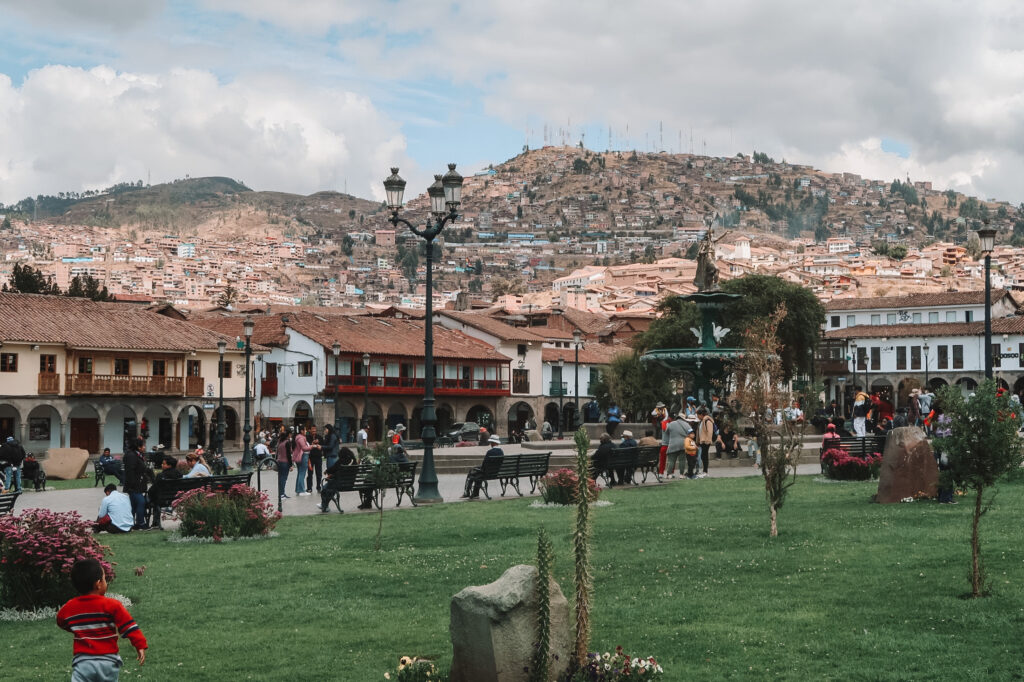
One of the most impressive structures in the main plaza is the Cusco Cathedral (also known as Cathedral Basilica of the Virgin of the Assumption). Built in 1654, the gargantuan building’s front steps are a popular gathering place for people in the square.
Unfortunately, Cusco Cathedral’s history isn’t the most pleasant. Before the Spanish conquest, the Inca people had their own temple, Kiswarkancha, on the same site. The Spanish conquistadores knocked it down and built the Catholic cathedral in its place.
Nowadays, you can visit the inside of the cathedral during your trip to Cusco. An adult tourist ticket costs S/25 ($6.63 USD) and gives you access to the cathedral’s interior, its 10 side chapels, and the 7 independent altars.
If you’re planning to visit a few different churches during your 2 days in Cusco, the Religious Circuit Ticket saves you a bit of money. This ticket covers admission to 4 religious sites: Cusco Cathedral, San Blas Church, San Cristobal, and the Archbishop’s Palace. The Religious Circuit Ticket costs S/30 ($7.95 USD) per adult.

Basilica Menor de la Merced
From the Plaza de Armas, it’s a two-minute walk to your next destination, the Basilica Menor de la Merced. This elaborate Catholic church and monastery includes a colonial courtyard, religious artworks, and ornate architecture.
An adult entrance ticket to the basilica costs S/15 ($3.98 USD).
Arco de Santa Clara
A bit further down the street from the basilica is Arco de Santa Clara, or Santa Clara Arch. It sits on the corner of the Plaza San Francisco, another lovely park in Cusco’s city center.
The Santa Clara Arch makes a nice, quick photo stop on the way to your next destination, the San Pedro Market.
Mercado Central de San Pedro
Mercado Central de San Pedro, or San Pedro Market, is a bustling local market with produce, meat, grains, prepared foods, and more. You can also find alpaca wool clothing and other handmade handicrafts.
Similar to the Mercado San Camilo in Arequipa, one of the best things to look out for at the San Pedro Market is fresh fruit juice.
There are tons of different unique fruits to choose from, like prickly pear, papaya, and mango, and the fruits are juiced to order. Such a delicious and refreshing treat!
The market is open every day from 7 am to 6 pm.
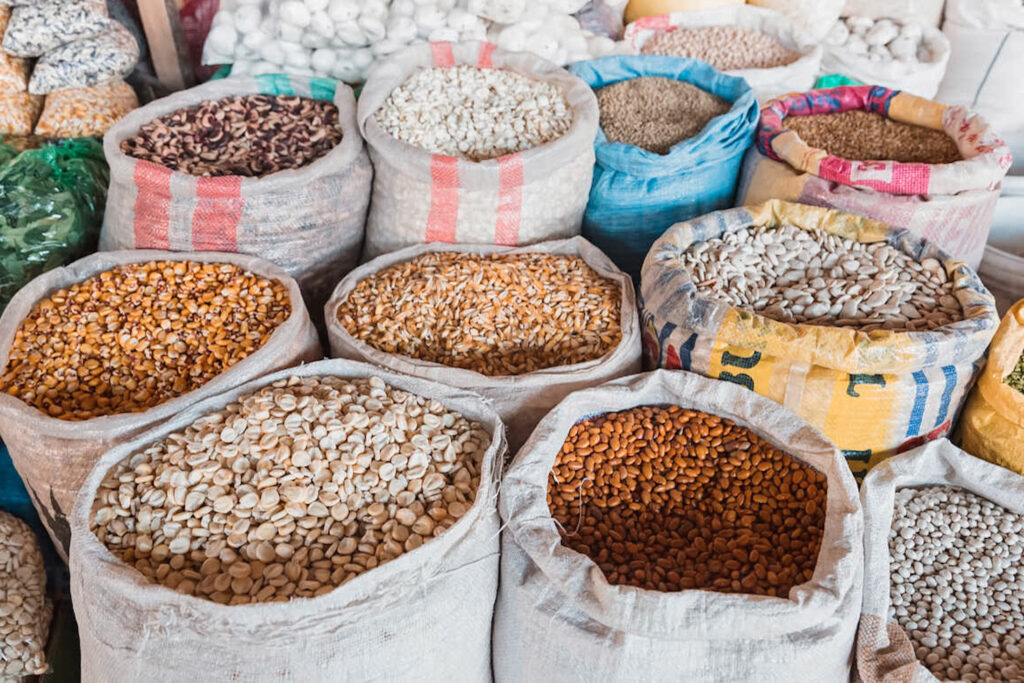
Cusco itinerary day 2
Saqsaywaman
On your second day in Cusco, head up the steep hill on the north end of the city to the Saqsaywaman cultural site.
Saqsaywaman (also known as Sacsayhuamán, Xacxaguaman, or “sexy woman,” hah) is an ancient Inca citadel built in the 15th century. It served as a military fortress as well as a religious and administrative center for the Inca people.
As a historic site, Saqsaywaman is significant because of its impressive construction. The fortified complex is filled with dry stone walls made of massive boulders that weigh up to 200 tons. These boulders were shaped and fitted together with incredible precision — the exact techniques that the Inca used are still a mystery to this day!
Saqsaywaman was also the site of a major battle in 1536 between the Inca Empire and Spanish conquistadors. Despite being vastly outnumbered, the Spanish were able to defeat the Inca army and seize control of Cusco, marking a turning point in the conquest of Peru.
Today, Saqsaywaman is a popular tourist destination and a UNESCO World Heritage Site. The site is open every day from 8 am to 5 pm.
To enter Saqsaywaman, you’ll need to buy a Cusco Tourist Ticket. These can be bought online in advance from GetYourGuide, at the Municipalidad Del Cusco building, or at the site itself.
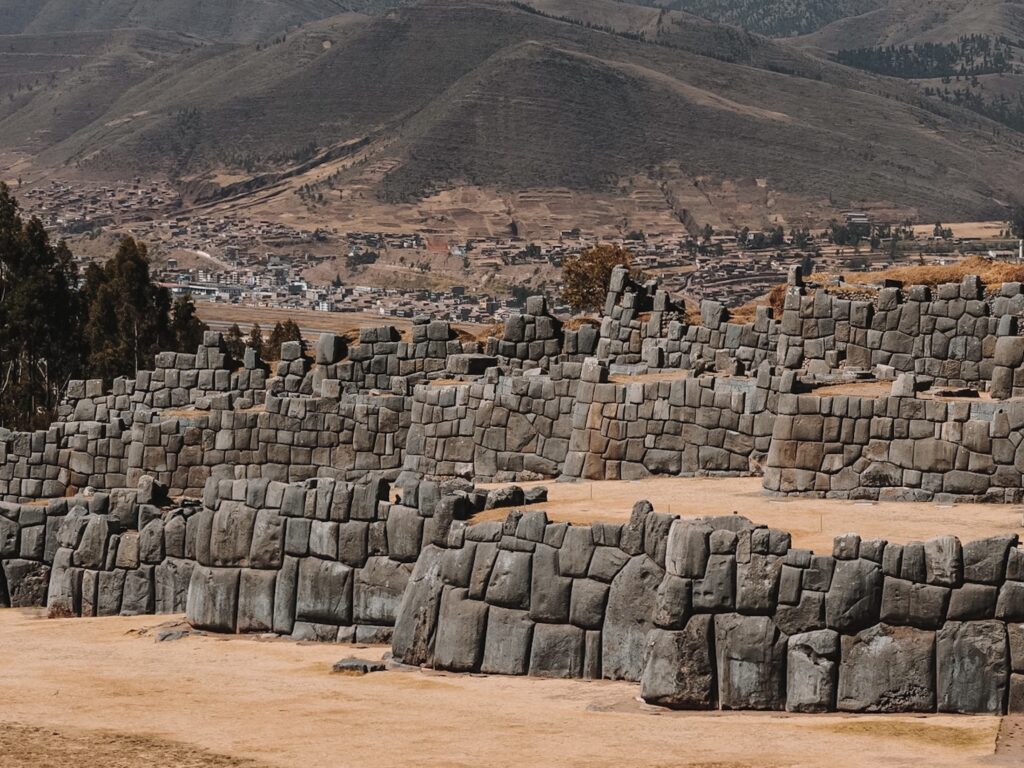
San Cristobal
Iglesia de San Cristobal is a good place to stop on your way back to town from Saqsaywaman. This Catholic church on the hill is beautiful, but it also offers incredible views of Cusco from above.
If you want to enter the inside of the church, you’ll need to pay the entrance fee of S/15 ($3.98 USD) or get a Religious Circuit Ticket for S/30 ($7.95 USD).
Explore the San Blas Neighborhood
San Blas is a trendy cultural and artistic district within Cusco’s city center. Here, you’ll find a plethora of coffee shops, art galleries, artisan workshops, and more!
Besides these spots, you can also visit the Templo del San Blas, Plazoleta de San Blas (San Blas Plaza), and the Sapantiana Aqueduct. Make sure to spend some time during your second day in Cusco just wandering the picturesque and narrow cobblestone streets.
Twelve Angled Stone
After getting lost in San Blas, head back towards Cusco’s main square to find the Twelve Angled Stone, or Piedra de los 12 Ángulos.
Set amongst a rock wall near the Palace of the Archbishop, this famous stone dates back to the Inca Empire. Its perfectly-cut edges are an example of the Inca’s construction and engineering skills.
The archaeological artifact is a popular tourist attraction and is considered a National Heritage Object in Peru.
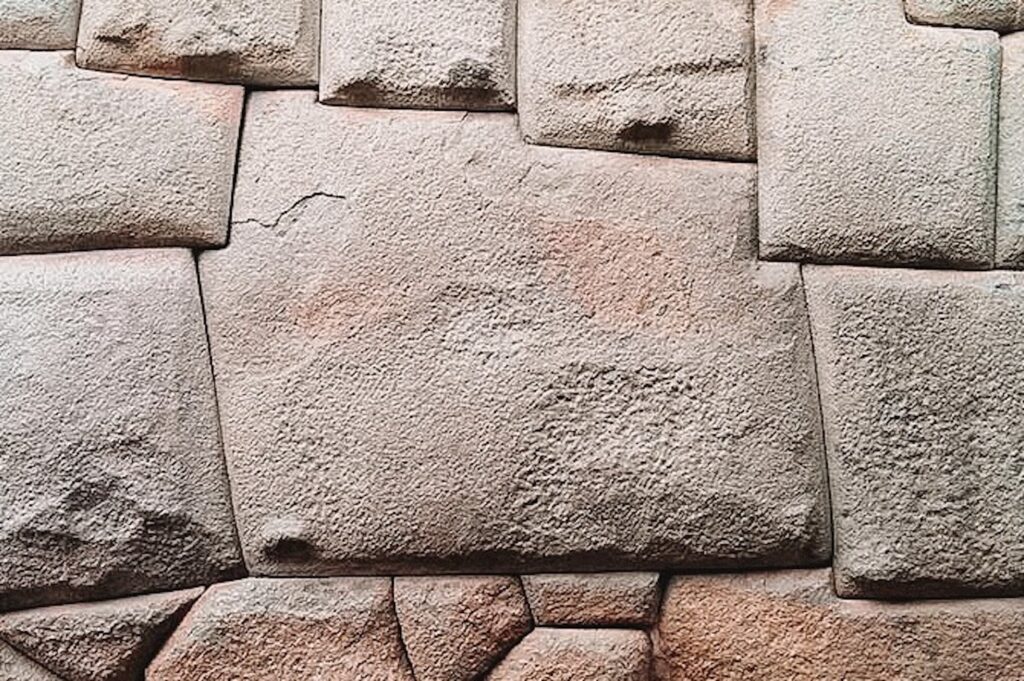
Qorikancha
Qorikancha is a large 15th-century Inca temple-turned-Catholic church and modern-day museum complex. During the height of the empire, the temple’s floors and walls were lined with sheets of pure gold as a symbol of the Inca’s imperial power!
All throughout the historic site, you’ll see intricate stonework and masonry, another example of the Inca’s advanced engineering and mathematical skills.
If you want to learn more about the Inca Empire’s history in Cusco, definitely get a tour guide inside Qorikancha. They’ll be able to explain a lot about the cultural significance and the shifts that occurred after the Spanish conquest.
Handicraft Center Cusco
The last stop on your 2-day Cusco itinerary is the Centro Artesanal, a shopping center with vendors that sell everything under the sun.
At the Handicraft Center, you’ll be able to find alpaca wool goods, figurines, textiles, jewelry, and other colorful knickknacks. It’s the perfect place to stock up on unique Peruvian souvenirs before you head back home.
The Centro Artesanal is open every day from 9 am to 10 pm.
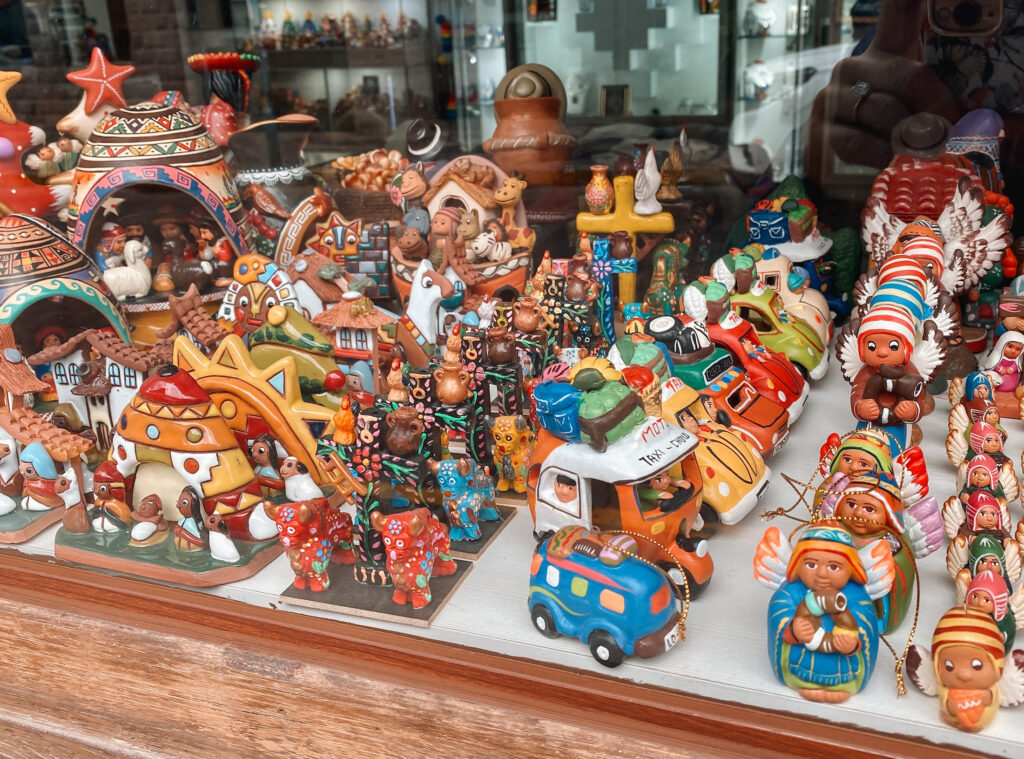
Best restaurants in Cusco
- The Bagel Cafe: A popular spot that serves up healthy, Mediterranean breakfasts with big portion sizes
- Café Dwasi Peruvian Coffee: A fabulous coffee shop on the Plaza Kusipata that has fresh pastries and fast wifi
- Qura: Cafe with healthy options like Buddha bowls, soups, and smoothies
- Morena Peruvian Kitchen: Classic Peruvian food. Enjoy a delicious pisco sour with views over the Plaza de Armas
- Cafe Macchiato: Coffee shop that makes a mean cappuccino and slice of cake. Make sure to sit on the upper level for fun balcony seating over the street
- Siete y Siete Cafeteria: Local Peruvian cuisine with a rotating menu of savory dishes, desserts, and cocktails
- Green Point Vegan Restaurant: Trendy and modern spot with plant based options

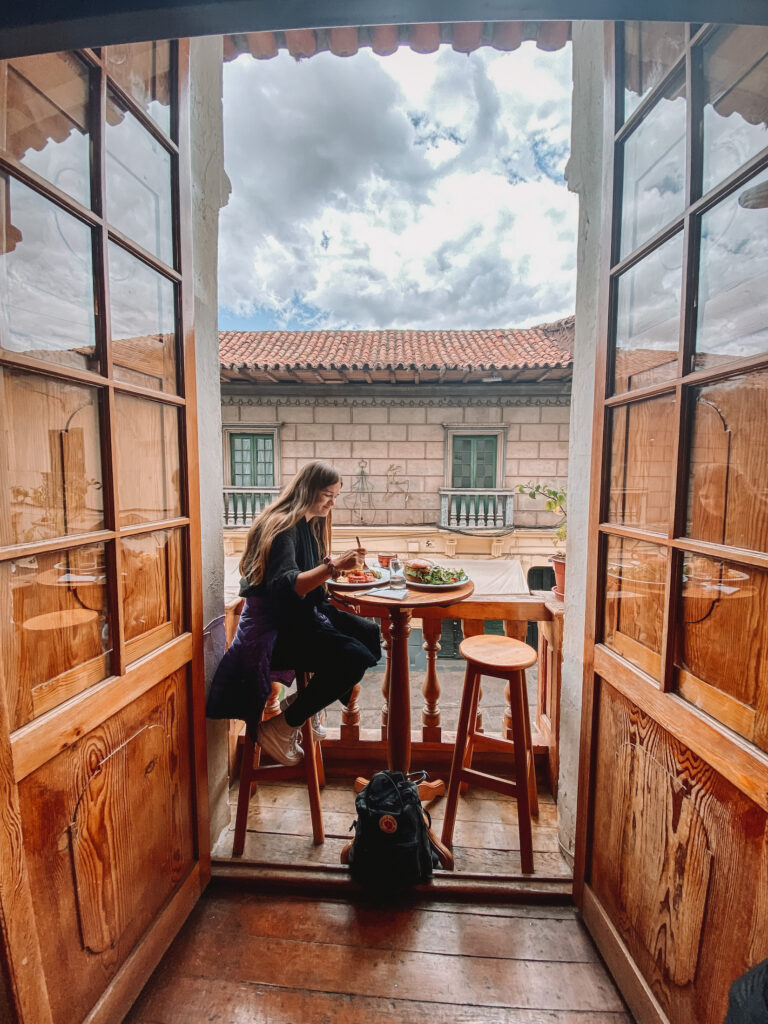
How to get to Cusco
Flights to Cusco
If you’re flying into Cusco, you’ll arrive at Alejandro Velasco Astete International Airport (otherwise known as Cusco Airport, CUZ).
The Cusco Airport is located 5.5 km (3.4 mi) away from the Plaza de Armas. To get to Cusco city center from the airport, you can either take a taxi or a bus. Taxis cost around S/12 ($3.18 USD) and take 20 minutes, while the local minibus costs S/1 ($0.25 USD) and take 40 minutes.
Search for flights to Cusco
By bus
Lima to Cusco
Because of the windy roads and massive changes in elevation, the bus ride from Lima to Cusco can take 21 hours or more! For travelers on a strict schedule, the price of flights is a bargain when you factor in the time you’ll save.
If you’re on a shoestring backpacker budget, though, long-distance buses in Peru could be the best option for you. Companies like Civa, Cruz del Sur, and Ormeño offer options that can make the journey relatively comfortable.
Puno to Cusco
The journey between Puno and Cusco takes between 7-8 hours and costs around $20 USD. There are both daytime departures and overnight buses, which would save you money on accommodation for the night as well.
By train
PeruRail offers a long-distance train route that connects Cusco to Arequipa and Lake Titicaca/Puno. The luxurious experience includes comfortable train cars, gourmet meals, and live music.
There are two options to choose from: Andean Explorer and Titicaca Train.
The Andean Explorer operates four different routes that run between Cusco, Lake Titicaca, and Arequipa. These multi-day journeys offer spectacular views, high-end amenities, and private en suite cabins.
The Titicaca Train is a full-day journey that runs between Cusco and Lake Titicaca. There are several departures each week in both directions.
Both the Andean Explorer and the Titicaca Train leave from Wanchaq train station in Cusco. Train tickets for these routes are not cheap — a one-way bunk bed cabin starts at around S/13,000 ($3,445 USD).
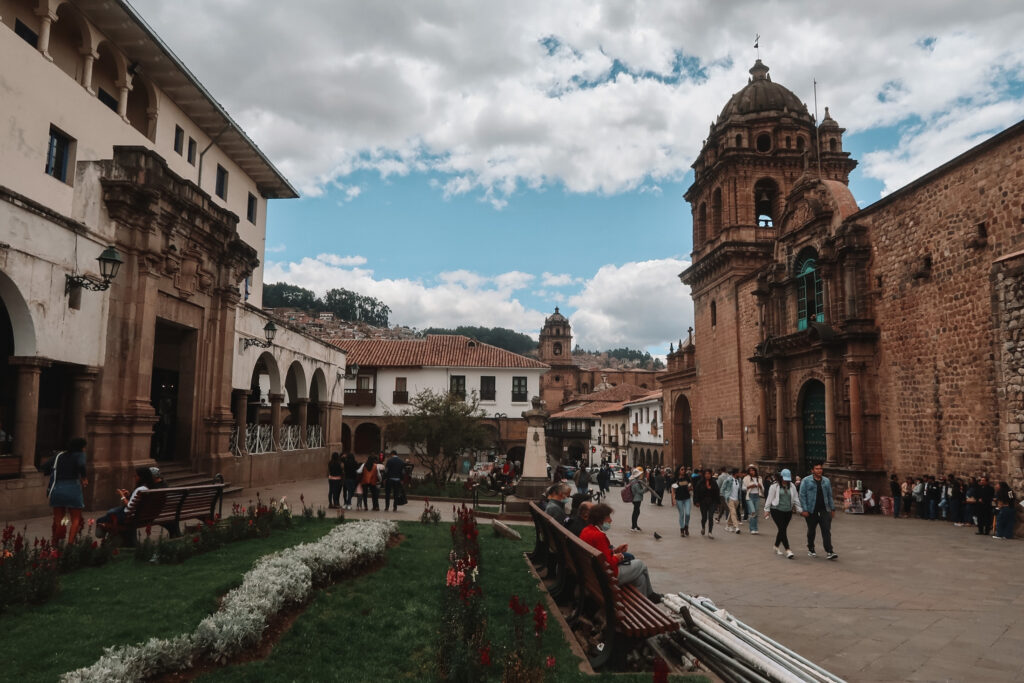
Where to stay in Cusco
$ — Hostal Goya Andina
Hostal Goya Andina is the best place to stay in Cusco if you’re looking for cheap and cheerful accommodation. Just a 10-minute walk from the city center, this highly-rated guesthouse also includes a free continental breakfast.
$$ — Hawka Inka Hostal
Located in the heart of Cusco, Hawka Inka Hostal is a great choice for those wanting a clean, comfortable, and quiet room. A tasty, free breakfast is included. We got the best views of the city out our window as well!
$$$ — MOAF Boutique Hotel
MOAF is one of the best hotels we stayed in during our entire time in Peru. The hotel was beautiful, quiet, and the staff were very helpful. They also packaged up our free breakfast and had it waiting at reception for our early morning tour the next day!
Search for hotels in Cusco

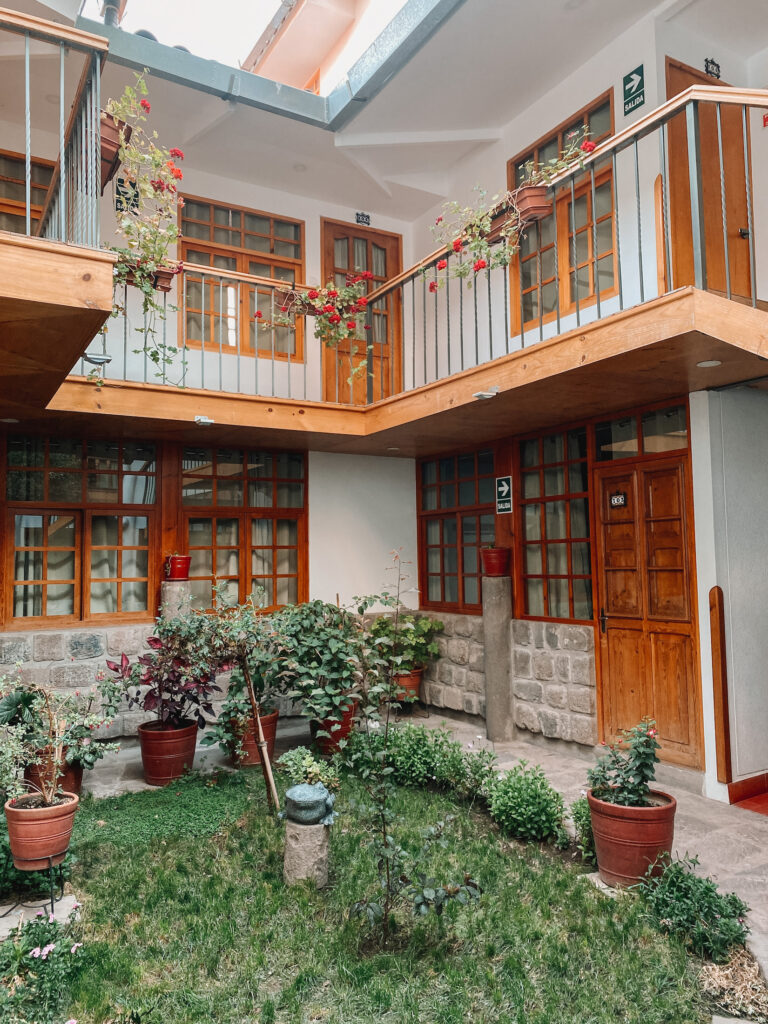
Best day trips from Cusco
Cusco to Sacred Valley
The Sacred Valley of the Incas, located in the Andean highlands of Peru, is a place steeped in history and spirituality. This valley was considered sacred by the Incas due to its fertile land, winding rivers, and stunning vistas.
It’s home to numerous archaeological sites, including the famous Machu Picchu, which is one of the Seven Wonders of the World. The Sacred Valley also boasts vibrant communities of indigenous people who still maintain their traditional ways of life.
This is the tour we took from Cusco through the Sacred Valley. I’d highly recommend taking a guided tour because you get a lot more information and context than you would otherwise!
Here are the stops we saw on our tour:
- Mirador Taray: A viewing deck with a panoramic view of the valley below
- Town of Pisac: Local market and an archaeological site with ancient temples
- Moray: Inca archaeological site on a high plateau with terraces
- Maras Salt Mines: Thousands of terraced salt ponds
- Ollantaytambo: Ollantaytambo Sanctuary and Qelloraqay archeological sites


Machu Picchu
Machu Picchu is a stunning Incan citadel and bucket list destination located in the Andes Mountains of Peru.
Built in the 15th century, it’s one of the most iconic and recognizable archaeological sites in the world. The city was abandoned during the Spanish conquest and remained hidden for centuries until it was rediscovered in 1911.
Today, Machu Picchu is a UNESCO World Heritage Site and one of the most popular tourist destinations in South America. You can explore the intricate stonework, terraces, and buildings that make up the citadel and enjoy breathtaking views of the surrounding mountains and valleys.
Machu Picchu tickets
There are two types of tickets: Machu Picchu only (just the archeological site) and Machu Picchu plus a hike.
If you’re not taking a hike, there are 4 different circuits (or routes) around the archeological site to choose from. Circuit 2 is the most popular and recommended for most people. If you do want to hike, the circuit you’ll do is determined by which hike you choose.
After choosing which circuit you want to do, you’ll need to decide on an entry time.
For foreign tourists, Machu Picchu tickets cost S/200 ($50.28 USD) per adult. Peruvian and Andean Community citizens get a reduced rate.
You can either buy your ticket from the government’s official website or through GetYourGuide. The latter ends up being a bit more expensive, but the website is much more user-friendly and they have an excellent cancellation policy.
Getting to Machu Picchu from Cusco
There are a few options for getting to Machu Picchu from Cusco. We had a bit of extra time, so we decided to break our journey up into a few days. Here’s exactly what we did:
- Day 1: Cusco to Ollantaytambo — Guided tour through the Sacred Valley that starts in Cusco and ends in Ollantaytambo. We spent the night at B&B Chayana Wasi in Ollantaytambo.
- Day 2: Ollantaytambo to Aguas Calientes — Train ride with either Inca Rail or PeruRail. The trip takes an hour and a half and is spectacularly scenic, winding through valleys and around the Urubamba River. We spent the night at Sacred Stone Boutique Hotel in Aguas Calientes.
- Day 3: Aguas Calientes to Machu Picchu — Coach bus ride. You can either buy tickets at the bus station or online from Consettur in advance. After seeing the Inca citadel of Machu Picchu and hiking Huayna Picchu, we traveled back to Cusco the same day.
If you’re up for unique adventure, consider hiking the Inca Trail. The 4-day, 3-night trek is one of the most famous hikes in the world! It goes from Km 82 (about 40 minutes outside of Ollantaytambo) to Machu Picchu’s Sun Gate (also known as Inti Punku). The Inca Trail requires a ton of advance preparation and the booking of a private tour.
Machu Picchu day trip?
While it’s technically possible to visit Machu Picchu as a day trip from Cusco, I wouldn’t recommend it. The journey takes several hours each way, and it’s important to allow enough time to explore the site once you arrive.
Visiting Machu Picchu as a day trip from Cusco would mean a very long day, with little time to explore the site or appreciate its beauty. At the very least, spend one night in the nearby town of Aguas Calientes to acclimate before visiting the Lost City of the Incas.
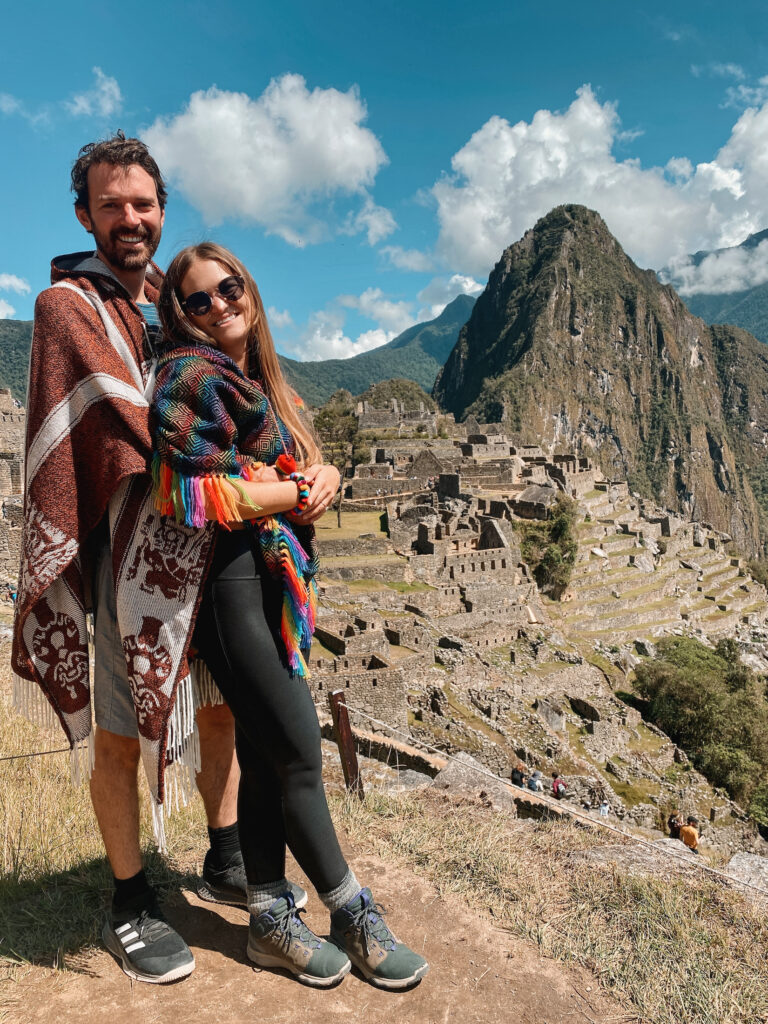
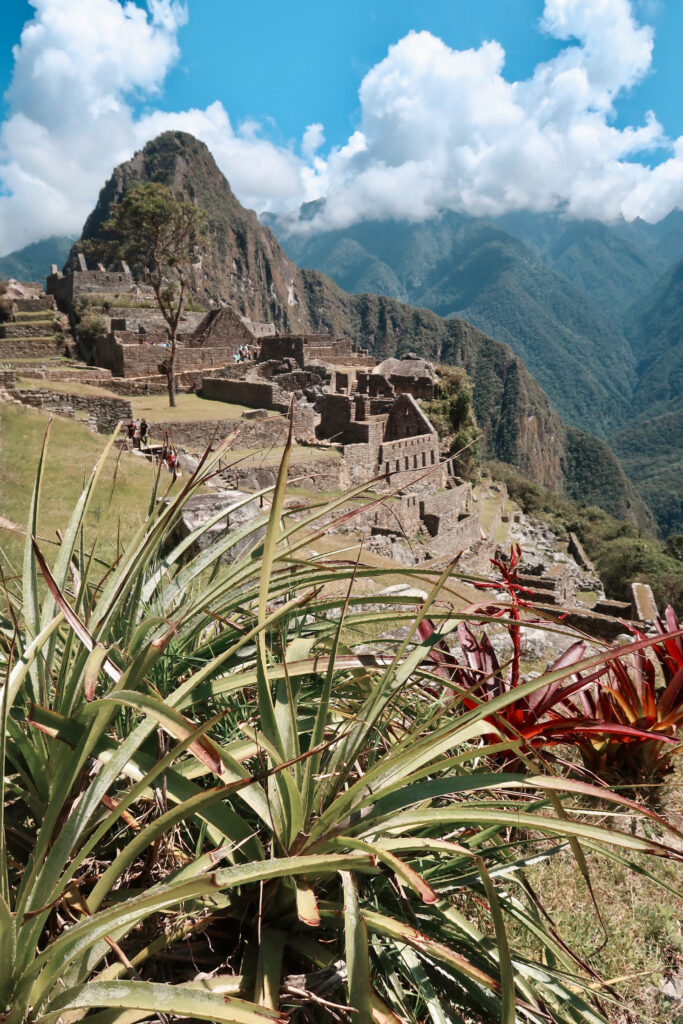
Rainbow Mountain
Rainbow Mountain, also known as Vinicunca, is a stunning natural wonder located about three hours from Cusco. It’s named for its colorful stripes of sedimentary rock, which give it a rainbow-like appearance!
The hike to the summit is (in my opinion) very challenging because of the high elevation. Once you make it to the top, you’re rewarded with breathtaking views of the surrounding mountains and valleys.
This is the tour to Rainbow Mountain that we chose. For safety reasons, I’d highly recommend going with a tour vs. on your own — the tour operators carry a first aid kit and extra oxygen bottles in case you need them.
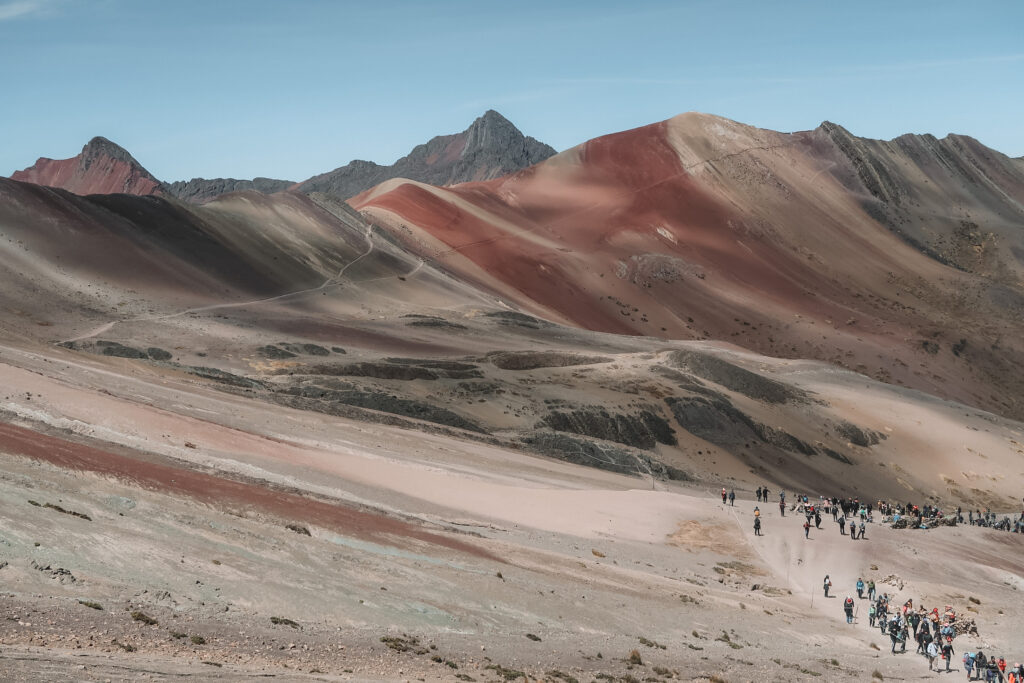
Cusco FAQ
Is 2 days in Cusco enough?
Two days in Cusco is enough time to see most of the main attractions in the city center, such as the Main Square, Cusco Cathedral, and San Pedro Market. You’d also have enough time to visit the nearby Inca ruins and try some tasty traditional Peruvian food.
However, you might feel a bit rushed if you’re trying to see everything in Cusco in just 2 days. This 2-day Cusco itinerary doesn’t leave a lot of free time, so if you like to travel a bit slower, it would be worth extending your time in the city.
Even if you’re working with a tight schedule, I wouldn’t recommend spending fewer than 2 days in Cusco. Keep in mind that the city is located at a high altitude, so it’s important to take things slowly and allow enough time to acclimate!
How many days should I spend in Cusco?
Two to four days is the perfect amount of time to see all of the main attractions, but you could easily spend up to a week (or longer!) if you want to see everything the region has to offer.
With a few more days in Cusco, you could take a day trip to Humantay Lake, see some lesser-known Incan sites, or participate in a fun chocolate workshop.
Is Cusco a walkable city?
Yes, Cusco is a walkable city, especially in the historic center.
Many of the main attractions (like the Plaza de Armas, San Pedro Market, and the Twelve Angled Stone) are located within a reasonable walking distance from each other. The streets in the historic center are narrow, cobblestoned, and pedestrian-friendly, making it easy to explore on foot.
Some parts of the city, especially those farther outside of the historic center, can be more hilly and challenging to walk. Taxis or Ubers can be a great option for getting around the surrounding area.
Is Cusco safe?
Yes, Cusco is generally a safe destination for travelers!
Like any city, though, it’s important to take precautions to ensure your safety. Petty crimes like pickpocketing, theft, and scams can happen, especially in crowded tourist areas. Make sure to be aware of your surroundings and keep an eye on your belongings in crowded places.
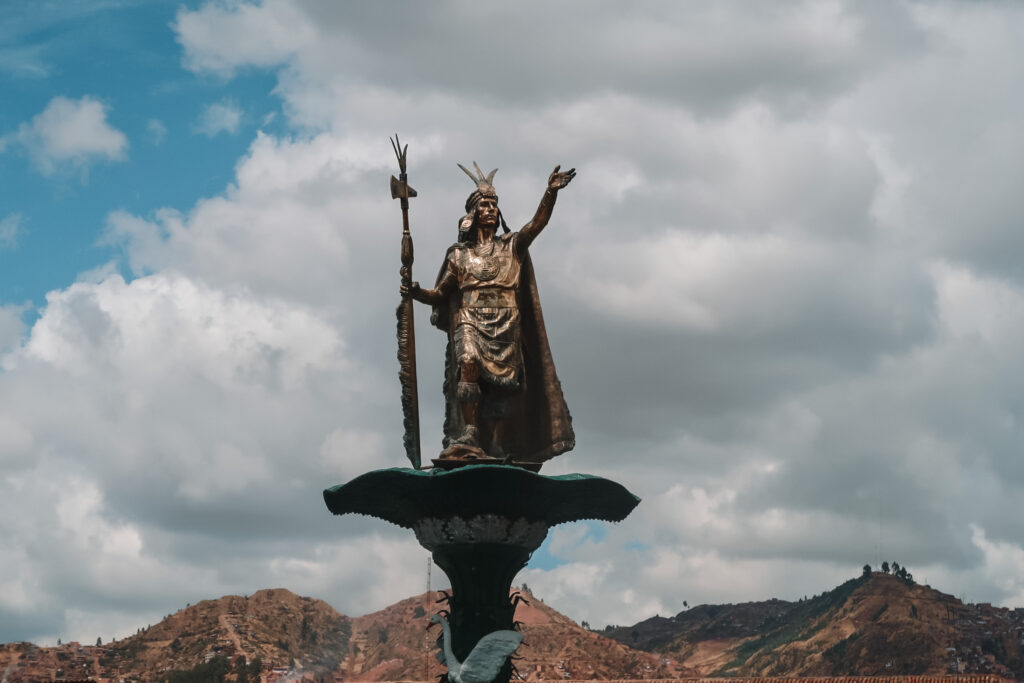
How to avoid altitude sickness in Cusco
Altitude sickness is a common gripe for travelers to Peru. Many of us live close to sea level and aren’t used to the outrageously high altitudes you’ll find in the Peruvian Andes. Some common symptoms of altitude sickness include headache, nausea, and fatigue. These can get worse the higher you climb, and although they’re usually mild, they can in some cases become fatal.
Here’s how to avoid altitude sickness in Cusco:
- If you can, consider spending a few days in a lower altitude city like Arequipa (2,335 m / 7,661 ft). Slowly working your way up to higher elevations is the best way to avoid altitude sickness symptoms.
- Try chewing on coca leaves or consuming coca-infused tea, candy, or chocolates. Coca leaves have been used by the Andean people for generations to soothe the effects of altitude sickness.
- Drink plenty of water, especially when exercising. In addition to plain water, water with added salt or electrolytes will help replenish vital nutrients lost when you sweat.
- Spend as much time as you can acclimatizing to higher altitudes in the Cusco region before setting out on any strenuous hikes, like Huayna Picchu or Rainbow Mountain. The longer you spend at altitude, the more adjusted your body will be to the thinner air and lack of oxygen!
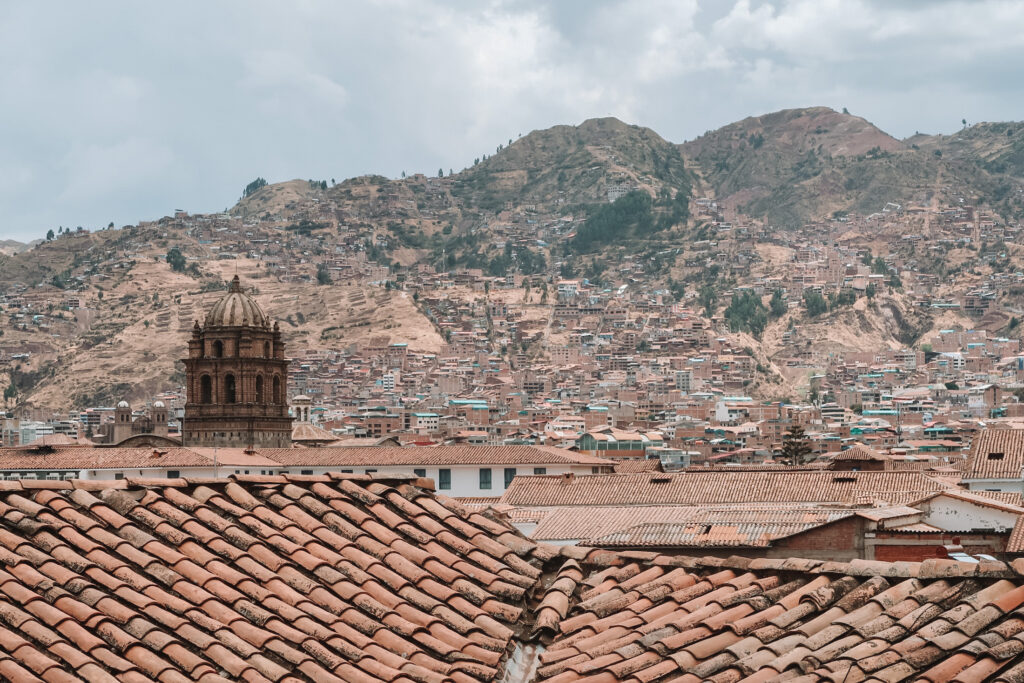
You’ll also love:
- How Much Does an Iceland Trip Cost? My 12-Day Budget Breakdown
- 8 Common Travel Myths That Need to Be Debunked
- How to Visit Malbork Castle: The Best Day Trip From Gdansk, Poland
And there you have it, a full itinerary for 2 days in Cusco! If you found this Cusco travel guide helpful, please let me know in the comments below.
xoxo Niki
https://nikiinnewzealand.com/2-days-in-cusco/
